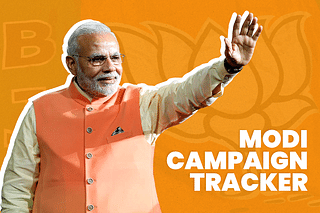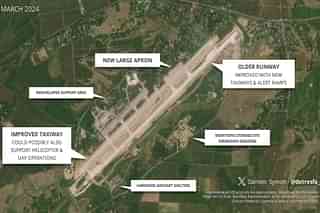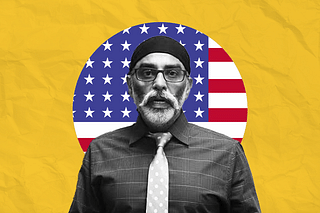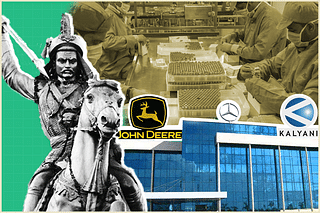Culture
Tale Of The Indian Railways: How Locomotives Have Become Anonymous
Book Excerpts
Jun 10, 2017, 01:14 PM | Updated 01:14 PM IST
Save & read from anywhere!
Bookmark stories for easy access on any device or the Swarajya app.
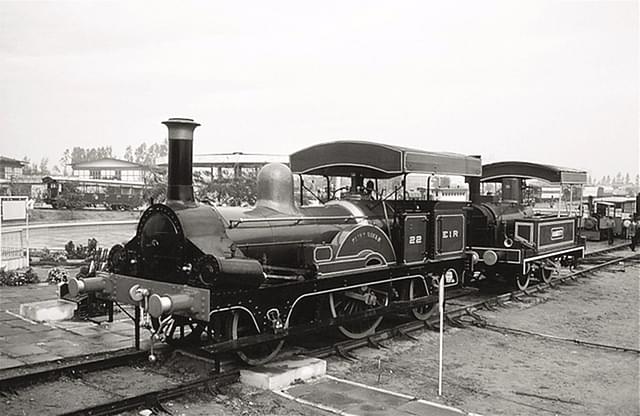
The fourth largest railway network in the world, which traverses the length and breadth of the world’s second most populated nation, has a history that spans over a century and a half. And that is what the book ‘Indian Railways: The Weaving Of a National Tapestry’ is all about – a history laced with anecdotal tales that tell the story of Indian railways up to the time of independence.
Here is an excerpt:
The Express and the Fairy Queen are commonly believed to be sister locomotives, both built by Kitson, Thompson and Hewitson. But there also seems to be a view that the Express was built by Stothert, Slaughter and Company of Bristol, and not by Kitson, Thompson and Hewitson. It shouldn’t be that difficult to resolve this anomaly. As for the Fairy Queen, it is a famous locomotive. It was withdrawn from service in 1909. But, restored in 1997, it did a two-day excursion from Delhi to Alwar, with an overnight stay in Sariska.
That train was called the Fairy Queen Express, and the locomotive entered the Guinness World Records as the oldest functional steam locomotive in the world. For reasons not clear, the locomotive was withdrawn (parts were probably stolen) and it is now housed in the Rewari steam locomotive shed. The Delhi–Alwar train is still operated by Indian Railway Catering and Tourism Corporation (IRCTC). But with the Fairy Queen gone, it can no longer be called the Fairy Queen Express.
It’s called the Steam Express and its locomotive is a WP 7161. For years, WP was the workhorse of the railways in India. ‘W’ signifies a broad gauge locomotive, and ‘P’ signifies that it is used for passenger traffic. WP 7161 is indigenous (the initial WPs were imported) and was built at Chittaranjan Locomotive Works. It is the engine we saw in the film Bhaag Milkha Bhaag. WP 7161 has a name—Akbar. But no one seems to refer to it as Akbar. It is generally called WP 7161.
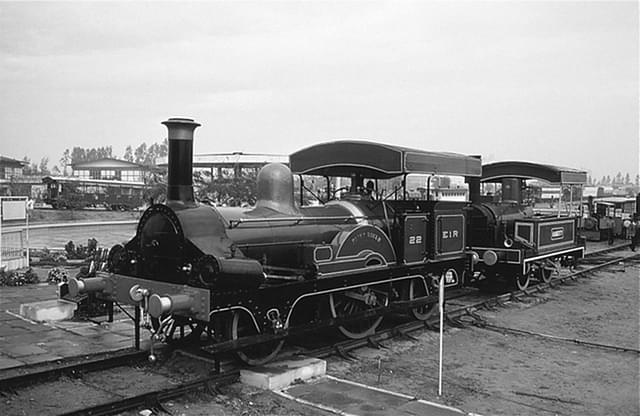
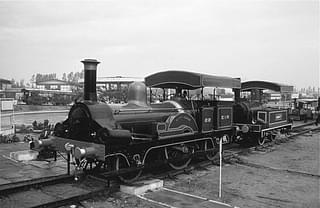
Initially, the locomotives of those times were imported.
. . . Much of what went into India’s railways: locomotives, equipment, steel for bridges and structures, rails, and sleepers, were almost entirely sourced from outside the country. While over time, some of the simpler items of these—sleepers, bolts et cetera began to be indigenously manufactured, the more technology-intensive in this list, locomotives for instance, continued to be imported chiefly from Great Britain. Attempts at locomotive production domestically, in the initial years, were thwarted or at least inhibited, by the adoption of ‘standard types’ of locomotives, which meant that special sanction was needed to build ‘non-standard’ locomotives. However, there were some definite spin-offs—railway technology requires extensive facilities for repair and maintenance, almost at the same scale as for manufacture. Therefore, quite early on, India’s railway network saw the fairly extensive development of workshops, sheds and shops for repair and maintenance of rolling stock. (Introduction in Roopa Srinivasan, Manish Tiwari and Sandeep Silas edited, Our Indian Railway, Themes in India’s Railway History, Foundation Books, 2006)
Between 1853 and 1947, 14,400 locomotives were imported from Great Britain, and around 3000 locomotives from other countries. Between 1865 and 1941, India produced 700 locomotives. This brings us to Jamalpur. The Jamalpur Railway Workshop was established in 1860. It is impossible to overlook Jamalpur when it comes to the history of Indian Railways. This was where the EIRC [East Indian Railway Company] established its first railway workshop, in 1862.
Why was Jamalpur, adjacent to Munghyr (Munger) chosen? For years, even centuries, Munger had been a centre for the manufacture of guns— not only legal weapons, but also guns of the illegal and cottage variety. That’s a standard reason given for the choice of Munger—its tradition of making guns, pistols, spears and other ironware. Another reason advanced was that a railway line being attempted between Howrah and Delhi might pass through Munger/Jamalpur. But a shorter line (the Grand Chord or main line) developed via Gaya/Mughal Sarai and the entire so-called Sahibganj Loop, including Munger/Jamalpur, became relatively neglected.
Munger/Jamalpur were on the longer Sahibganj Loop and when the decision about Jamalpur was taken, the construction of the Grand Chord had not been anticipated. No doubt, each of these reasons contains some element of truth, but there is another story too. Most of the employees in the railway workshop then were English. They preferred hotels, restaurants and billiard-rooms to the Howrah workshop, and so long as the workshop was in Howrah, they were found more in these places of entertainment than in the workshop, even during working hours. Hence the workshop was shifted from Howrah to Jamalpur, more than 450 km away.
Rudyard Kipling visited Jamalpur in 1888 and wrote three pieces (not very charitable) on his visit in the Pioneer. They were published under the series ‘Among the Railway Folk’. His descriptions also covered the workshop:
Walk into a huge, brick-built, tin-roofed stable, capable of holding twenty-four locomotives under treatment, and see what must be done to the Iron Horse, once every three years if he is to do his work well. On reflection, Iron Horse is wrong. An engine is a she—as distinctly feminine as a ship or a mine.
As the examples of the Express and the Fairy Queen indicate, locomotives weren’t initially given names. They were only distinguished by numbers, whether they were imported or domestically manufactured, as they subsequently were. Eventually, names began to be used, mostly the names of British bureaucrats or railway engineers—Lord Irwin, Lord Reading, Lord Elgin, Lord Harding, Lord Minto.
The sole exception at the time was a locomotive named after Ramgotty Mukherjee, the last general manager of the Nalhati–Azimganj light railway (more on it later in the book). Almost certainly, this was the first locomotive named after an Indian, and it was built in 1862 by Anjubault, the French manufacturer.
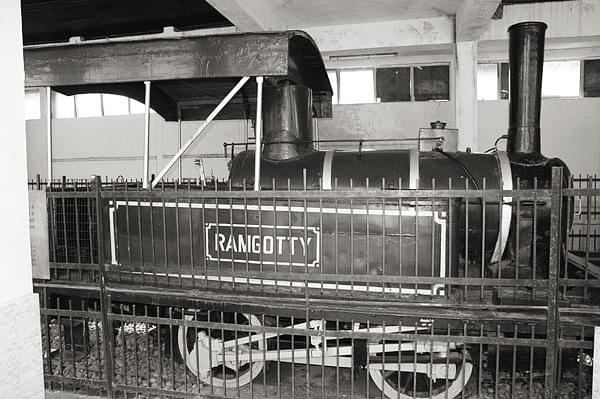
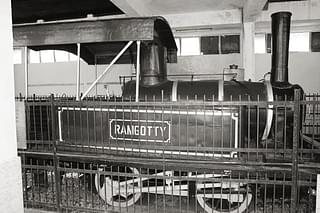
Down the years, the EIRC was always innovative in naming its locomotives, though the christening of locomotives was now no longer taken as seriously as it used to be earlier. For instance, the EIRC started the business of naming locomotives after insects—the gnat, locust, ant, hornet, bee, cricket, etc., or after animals and birds—deer, fox, monkey, eagle, etc.
The Ramgotty locomotive is now housed at the National Railway Museum, Delhi. After the initial years, all locomotives were christened, especially during the steam era. That’s become rare now. The last steam locomotive built (in 1970) was named Antim Sitara. Oddly enough, despite being built as late as in 1970, no one knows where this locomotive is now. Sure, diesel and electric locomotives are also occasionally named, often after political leaders—Lokmanya, Jagjivan Ram, Baba Saheb, Jawahar, Lal Bahadur Shastri, Deshbandhu. But no one takes these names seriously any more. Even if the names are mounted above the buffers when a locomotive is first built, subsequently, after several visits to workshops, the name boards vanish. Thus, locomotives have become anonymous.
Excerpted from Indian Railways: The Weaving of a National Tapestry by Bibek Debroy, Sanjay Chadha, Vidya Krishnamurthi, Penguin Random House India, 2017, with the permission of the publisher.
Save & read from anywhere!
Bookmark stories for easy access on any device or the Swarajya app.
Introducing ElectionsHQ + 50 Ground Reports Project
The 2024 elections might seem easy to guess, but there are some important questions that shouldn't be missed.
Do freebies still sway voters? Do people prioritise infrastructure when voting? How will Punjab vote?
The answers to these questions provide great insights into where we, as a country, are headed in the years to come.
Swarajya is starting a project with an aim to do 50 solid ground stories and a smart commentary service on WhatsApp, a one-of-a-kind. We'd love your support during this election season.
Click below to contribute.

